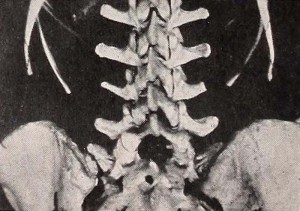
"Imagine, if you can, a subject which would be harder to present in motion pictures than the effects of a spinal anaesthetic. This is the problem that Leslie P. Thatcher solved so ably in his Technique and Principles of Spinal Anaesthesia with Nupercaine. Because most of the action takes place within the body, it was necessary to do some real thinking before a suitable motion picture presentation could be worked out. For example, the action of the fluid as it floats in the spinal canal was shown dramatically and effectively by floating some of the drug in a solution in a slowly tilting glass phial. A considerable use of X-rays served to show clearly just how the hypodermic needle should be handled, while well photographed diagrams and models aid the film's clarity. Operative scenes represent the best technique, and the action clearly demonstrates the qualities of Nupercaine as an anaesthetic. The picture is a study in straightforward exposition and, as such, it should serve its sponsors admirably. It is to be noted that Mr. Thatcher showed admirable restraint in his brief shots of operations. While sufficient for the medical man, they are not too long or gruesome for a lay audience." Movie Makers, Dec. 1939, 633-634.
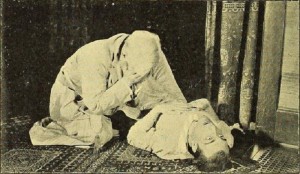
"The production of the Flower City Amateur Movie Club of Rochester, N. Y., Terror, 400 ft., 16mm., was written and directed by Frank J. Buehlman. It was recently screened as a special, added feature on a week's run at the Little Theater in Rochester. Terror is a psychological study of the effect of fear. Its story is based on a practical joke engineered by friends of the victim who, to the end of the film, remain ignorant of the disastrous results. As the story develops, we see the commonplace incidents of every day life through the eyes of the fear obsessed principal character. The handling of the theme required great care but the producers succeeded in making the highly fantastic reactions of the character seem plausible. With its exquisite lighting effects and the dramatic power achieved in the climactic sequences through cinematography, this film is certainly outstanding." Movie Makers, Dec. 1930, 759.
"This film discloses, concisely and with cinematic dexterity, what passes in the mind of a dying soldier in a shell hole in Flanders. The three memories flashing back to the suffering doughboy were well done and the film as a whole disclosed the best sense of cinematics revualed bv anv contender in this division." Photoplay, Nov. 1929, 67.
"In Thyroidectomy, Henry M. Lester, ACL, has combined all the essentials of the perfect medical film. The delicate color gradations of tissues that mean much to the surgeon are clearly evident, due to excellent exposure, lighting and suitable film stock. Thorough presentation of the operating technique is given by means of suitable telephoto lenses and properly placing the camera in relation to the surgical field. An unusual feature of this particular operation is the large number of instruments which necessarily must remain in the field most of the time, creating a difficult problem for the photographer in that the many shining surfaces tend to produce undesirable reflections. However, Mr. Lester has solved this problem to perfection. The film is a result of the combination of highly specialized skill, equipment designed for the purpose and an exact knowledge of the requirements for the perfect surgical film." Movie Makers, Dec. 1934, 534.
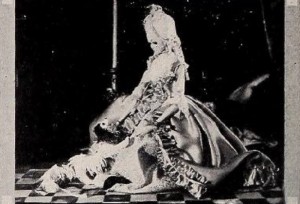
"In Traum Im Karneval, 1000 ft., 35mm., a distinctly new technique in cine puppet drama has been beautifully and conclusively demonstrated. Working with puppets free of distracting threads and controlled entirely from below the line of camera sight, Dr. Goldschmidt has brought to his film the fluidity and cinematic smoothness essential to a genuine photoplay. Gone are the proscenium arch and the unavoidably static feeling of photographed "theatre." Here the camera has moved freely from near shot to closeup or semicloseup as the action demands. Inserted scenes from real life, used with symbolism significant to the mood of the story, have served only to heighten the cinematic illusion, while the unusually graceful miming of the puppets amazes one with a feeling of uncanny and fantastic life. Traum Im Karneval is delicately conceived, sensitively directed and superbly photographed. Of brilliance equal to Dr. Goldschmidt's technique was the unfailing mastery of his collaborator, Richard Teschner, eminent European puppeteer." Movie Makers, Dec. 1931, 685.
A comedy about a man who, while under sedation at the dentist, dreams of a device that will make things disappear at will.
"Whither Flowing," depicts the nervous evils caused by parents in the thoughtless upbringing of children. The drama was compactly told, well acted and directed, and was marked by unusual photography." Photoplay, Nov. 1929, 67. "...Whither Flowing is a psychological study of hysteria.... Dr. Heise's Whither Flowing won second award in the dramatic division of the recent Photoplay Magazine contest...” Movie Makers, Feb. 1930, 104.
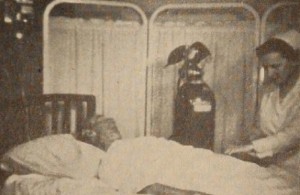
"Efforts of the American Cancer Society both to disseminate accurate information on the disease and to dispel erroneous conceptions form the theme of this unit production by the Amateur Movie Society of Bergen County, in Hackensack, N. J. Based jointly on a case history of neglect and a situation illustrating some baseless fears of cancer, the film shows the many forms of service rendered by the A.C.S. through its local chapters. Handsomely mounted and capably photographed, the picture is a tribute to the technical skill of its director, William Messner, and the cameramen who assisted him. The commentary and music on the sound track ably support the visual message. A tendency towards confusion in the scripting prevents the picture from fulfilling completely the thesis implied in its title." Movie Makers, Dec. 1949, 472.
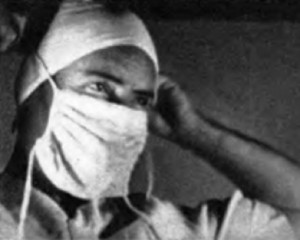
"The Will and the Way is a simple story of '"little people" — but it looms large in its appeal to the human heart. There are, in its tender adventures, the laughter of sympathy and the tears of pathos. From these, as from any great expression of beauty, there comes the genuine and ennobling uplift of the spirit which is so rare in a workaday world. Chester Glassley has been equal to his task. His photography, both indoors and out, is as nearly flawless as skill and patience will permit. His camera treatment is marked by a wise concentration on close views, a dramatic selection of angles and a fine sense of matching and contrasting color values. Good cutting, paired with a brilliantly executed montage sequence, rounds out the technical achievements. But his greatest production triumph lies in the casting and direction of the two lead players, who bring to the amateur screen its most genuine and sensitive acting to date. A young wife is to have a baby. Because of a harsh experience with a rum sodden doctor, she turns blindly toward the thought of going only to a specialist, a great obstetrician, famed both for his fine care and his $1000 fees. Her young husband's reaction as he learns of this feeling is the simple theme of the entire story: "I don't know where we'll get the money, but if that's the doctor you want, then that's the doctor you're going to get!" From then on. life for the young couple is a race against time, punctuated for the husband by a frantic search for cash, which leads him through the indignities of a pie eating contest, the insults of '"amateur night" and the bruises and battering of a vastly unequal prize fight. But the baby wins in the end. The harried father collects only three hundred dollars of the specialist's fee, a sum he begs the great doctor to accept as a down payment. This the physician does, only to return the entire amount later — with a receipted bill — as his tribute to the boy's courage. The Will and the Way is a short, unassuming film, made technically with the simplest tools provided by the craft. But, in its unfailing imagination, its moving tenderness and. above all. in its deep understanding of the human heart, this film is a proud peer among its colleagues of the Hiram Percy Maxim Award." Movie Makers, Dec. 1940, 576-577.
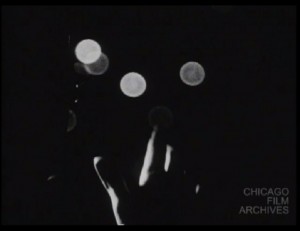
"This film seems to pick up the same couple from “I’ve Got This Problem” (played by Don Klugman and Judy Harris) a few years later, as they attend a swinging bohemian party where they pilfer personal objects from the unsuspecting guests." Chicago Film Archives.
Total Pages: 10